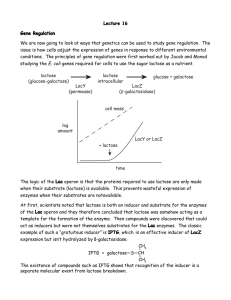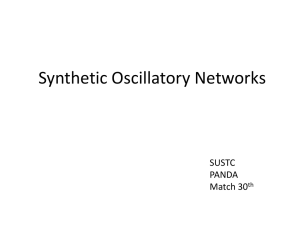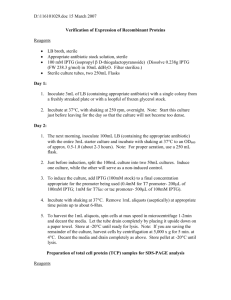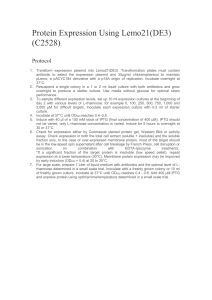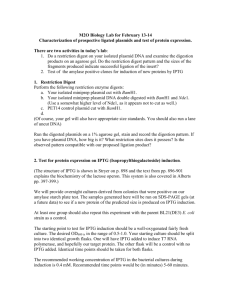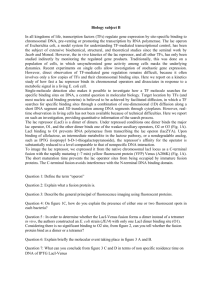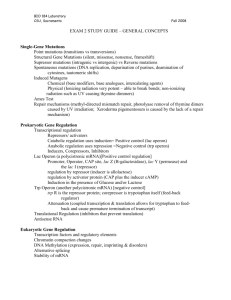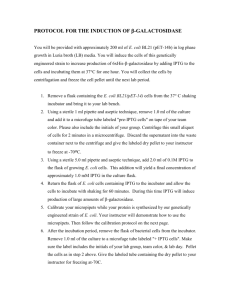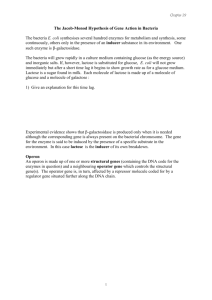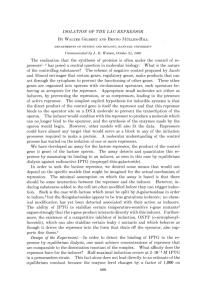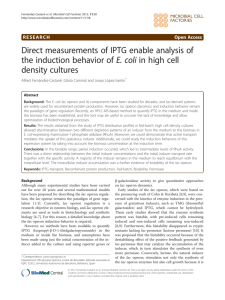Lecture 17 Gene Regulation We are now going to look at ways
advertisement
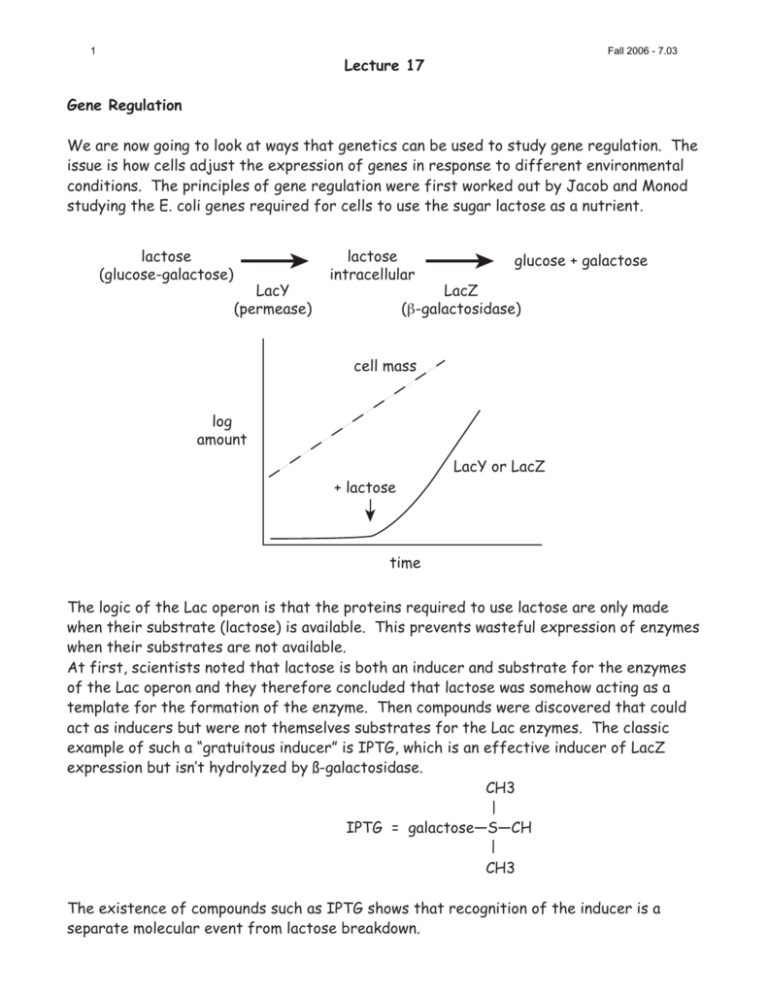
1 Fall 2006 - 7.03 Lecture 17 Gene Regulation We are now going to look at ways that genetics can be used to study gene regulation. The issue is how cells adjust the expression of genes in response to different environmental conditions. The principles of gene regulation were first worked out by Jacob and Monod studying the E. coli genes required for cells to use the sugar lactose as a nutrient. lactose (glucose-galactose) LacY (permease) lactose intracellular glucose + galactose LacZ (b-galactosidase) cell mass log amount LacY or LacZ + lactose time The logic of the Lac operon is that the proteins required to use lactose are only made when their substrate (lactose) is available. This prevents wasteful expression of enzymes when their substrates are not available. At first, scientists noted that lactose is both an inducer and substrate for the enzymes of the Lac operon and they therefore concluded that lactose was somehow acting as a template for the formation of the enzyme. Then compounds were discovered that could act as inducers but were not themselves substrates for the Lac enzymes. The classic example of such a “gratuitous inducer” is IPTG, which is an effective inducer of LacZ expression but isn’t hydrolyzed by ß-galactosidase. CH3 IPTG = galactose—S—CH CH3 The existence of compounds such as IPTG shows that recognition of the inducer is a separate molecular event from lactose breakdown. 2 Fall 2006 - 7.03 The next major finding was the discovery of LacI– mutants. LacI– mutants are constitutive, meaning that they always express ß-galactosidase at high levels regardless of whether there is an inducer present or not. LacI– mutants have apparently lost a component of the machinery the cell uses to turn off ß-galactosidase expression. The regulatory system turns out to be quite simple and by isolation of mutants and simple genetic tests Jacob and Monod were able to figure out the following scheme: The Lac Operon repressor protein b-galactosidase permease RNA polymerase P O promoter operator LacI LacZ LacY LacA + inducer The idea is that the inducer has a net positive effect on expression because the inducer is a negative regulator of the repressor, which is itself a negative regulator of the gene for ß-galactosidase. We will now consider how regulatory mutants can be analyzed genetically. We will use as examples different mutations in the Lac system but the genetic tests are very general and can be applied to most regulatory systems. Dominance test I+ Z+ I– Z+ I– Z+ / F’ I+ Z+ I+ Z– I+ Z– / F’ I+ Z+ I+ Z– / F’ I– Z+ ß-galactosidase –IPTG +IPTG – + + + – + – – – + – + Interpretation I– is constitutive I– is recessive Z– is uninducible Z– is recessive I– and Z– mutations complement (the mutations are in different genes) 3 Fall 2006 - 7.03 A second type of constitutive mutant inactivates the operator site and is known as a LacOc mutation. LacOc mutations are dominant as revealed in tests of the appropriate merodiploids: Oc Z+ Oc Z+ / F’ O+ Z+ –IPTG +IPTG + + + + Interpretation Oc is constitutive Oc is dominant You might think that on the basis of a dominance test we could tell whether we have a LacOc or a LacI– mutation. However, life is not so simple, because it is possible to find LacI– mutations that are dominant. Such mutations are known as LacI-d. They are dominant because the repressor protein is a tetramer and LacI-d mutant subunits can combine with normal subunits and interfere with their function. I-d Z+ I-d Z+ / F’ I+ Z+ –IPTG +IPTG Interpretation + + I-d is constitutive + + I-d is dominant We will now consider a new genetic test that will let us distinguish LacOc (operator constitutive) from LacI-d (dominant repressor negative) mutations. Cis/trans test I+ O+ Z+ –IPTG – +IPTG + I-d Z+ / F’ I+ Z– (cis) + + I-d Z– / F’ I+ Z+ (trans) + + Oc Z+ / F’ O+ Z– (cis) + + Oc Z– / F’ O+ Z+ (trans) – + Interpretation I-d is dominant in cis or in trans with Z+; Therefore we say it is “trans-acting”. Oc is dominant only in cis with Z+; Therefore we say it is “cis-acting”. If a mutation is cis-acting we take this as evidence that the mutation affects a site on DNA like an operator. If a mutation is trans-acting we take this as evidence that the mutation affects a diffusible gene product such as a repressor.
